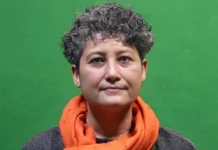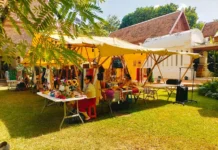[ Tongam Rina ]
Home Minister Amit Shah, palpably nervous and angry as he defended the citizenship amendment bill (CAB) on 9 December, said that the northeastern states need not worry as some of the states are under the Bengal Eastern Frontier Regulation (BEFR) and some areas in certain states are under the 6th schedule of the constitution, which would keep them out of the CAB.
During the course of the debate on the bill, Shah said neither Muslims nor those from the Northeast should fear the bill because it only aimed to help minority immigrants.
“We’re protecting the linguistic and social uniqueness of the Northeast region under this bill. A lot of people are trying to instill fear, knowingly or unknowingly. I want to inform everyone that there is no reason for anyone to be afraid of the bill,” Shah said, even though large parts of Assam and Tripura come under the CAA.
As he addressed the parliament, the home minister said that Manipur would also be included under the BEFR’S inner line permit (ILP) system, thereby exempting it from the provisions of the CAB.
The bill stated that “nothing in this section shall apply to tribal areas of Assam, Meghalaya, Mizoram or Tripura as included in the 6th schedule to the constitution and the area covered under the inner line notified under the Bengal Eastern Frontier Regulation, 1873.”
The bill was passed in the Lok Sabha as 311 voted for it and 80 against.
Those who voted in favour included regional parties, including the Asom Gana Parishad and the National’s People’s Party, which had earlier vociferously opposed the bill.
Now, under the Citizenship (Amendment) Act (CAA), Hindus, Buddhists, Christians, Jains, Parsis and Sikhs who have come from Afghanistan, Pakistan and Bangladesh prior to 31 December, 2014, owing to religious persecution in those countries, will not be treated as illegal immigrants but given Indian citizenship.
Even though the home minister said that states under the BEFR will be exempted, one needs to understand how effective the ILP is.
One can get an ILP for a month from district administrations if you have valid papers. This kind of ILP is mostly used by tourists. ILP for one year can be obtained from the state secretariat. All one needs are a valid address and sponsors. However, many enter Arunachal without an ILP because of the porous boundary. And at some check gates for ILPs, it’s never checked. Whenever there is a drive on ILP implementation, people are sent out of the state – to Assam.
There is some sort of system to check who enters Arunachal, but there is no way of knowing who leaves the state on time after procuring an ILP. There is no way of tracking who comes and goes. E-ILP is a robust system that tracks people who enter the state, but it also does not help entirely. The system is such that there is absolutely no way of knowing.
Arunachal is a prime example. This state is home to more than 12 lakh people. Some 8 lakhs are indigenous tribal population, while the rest are from outside the state, including refugees.
While the census gives a clear picture of the population breakdown, it would be impractical to say that Arunachal belongs only to the tribals, the indigenous population of the state. This state belongs to all who call it home. Arunachal belongs to all, including people from the rest of India and the refugee communities who have called Arunachal home since the ’50s. It is rather alarming that some organisations have targeted the refugee community in the state in the wake of the CAA. This is uncalled-for. Targeting the most marginalized is not part of the tribal ethos at all.
Though the Supreme Court gave its decision on the citizenship rights of the Chakma refugees in the state, it was never practically implemented and there is no clarity on it as yet.
The future of the Chakmas will have to be figured out by themselves and the people of the state because it needs to be.
The Supreme Court rulings have had no effect whatsoever; therefore the onus is on the people of the state and the Chakma community to figure out the future course of action. Angry reactions will only harm all.
As we figure out how the CAA will pan out, the fact is that the ILP has been used as a placatory tactic by Modi, Amit Shah and Co. The BEFR did not stop refugees from being settled in the state, nor from land ownership, though it is awfully limited. Land belongs to no one, as the Indian state has taken over the land of the indigenous people in the name of development and national security.
Chakma organisations have said no to the CAA, saying it vilifies the Chakma community as foreigners and beneficiaries of the CAB “despite the Chakmas being citizens of India and notified as scheduled tribes in Assam, Tripura, Mizoram, Meghalaya and West Bengal.”
The All India Chakma Social Forum has said that the Chakmas will challenge the constitutional validity of the CAA, including the exemptions given to ILP states.
The organisation has said that the exemptions given are unconstitutional as the Supreme Court of India in the case of the National Human Rights Commission vs State of Arunachal Pradesh & Anr on the Chakmas of Arunachal Pradesh held that inner line regulation does not apply for submitting citizenship applications.
While the CAA says that ILP states will be kept out of the purview of the act, it however, is not clear on the refugees who are in the states under the BEFR. With the implementation of the act, the apprehension among the refugee community and the indigenous communities has only grown, and the gap has further widened, all because of a law that protects a few and has made the vulnerable refugee community the subject of hate yet again.



